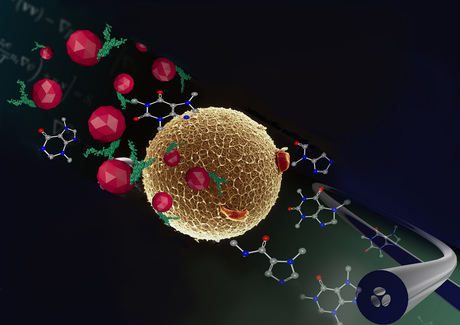New nanoscale biophotonics research node

The ARC Centre of Excellence for Nanoscale BioPhotonics (CNBP) has officially launched its new research node at Macquarie University.
The CNBP is a $40 million project focused on developing new light-based imaging and sensing tools that can measure the inner workings of cells in the living body. The multi-institutional initiative has research focused within nodes at The University of Adelaide and RMIT University as well as Macquarie University.
“We’re focused on developing new tools, which can detect the incredibly small features on and inside biological cells, to see how the body is working,” said Macquarie University Professor and CNBP Node Leader Jim Piper.
“It’s at the nanoscale that we operate, where the actions of atoms, molecules and proteins determines the health and wellbeing of the individual.”
Over 50 researchers, staff and students from Macquarie University, spanning a wide range of disciplines, will contribute to activity at the node. According to Professor Piper, the contributors will develop technologies and tools to “help us better understand a wide range of human-related conditions and offer many opportunities for commercialisation”.
“Our research will create new windows into the body and will ultimately lead to important health outcomes for Australians, particularly in the areas of cardiovascular disease, chronic pain and reproduction,” he said.
The launch was attended by NSW Chief Scientist & Engineer Professor Mary O’Kane, who claimed that “physics, biomolecular sciences and nanotechnology are key research strengths at Macquarie University”.
'Optical tweezers' could help study living cells
Physicists are using the tweezers to measure activity within microscopic systems over timeframes...
Aerosol test for airborne bird flu developed
The low-cost sensor detects the virus at levels below an infectious dose and could lead to rapid...
Superelastic alloy functions in extreme temperatures
The titanium-aluminium superelastic alloy is not only lightweight but also strong, offering the...




